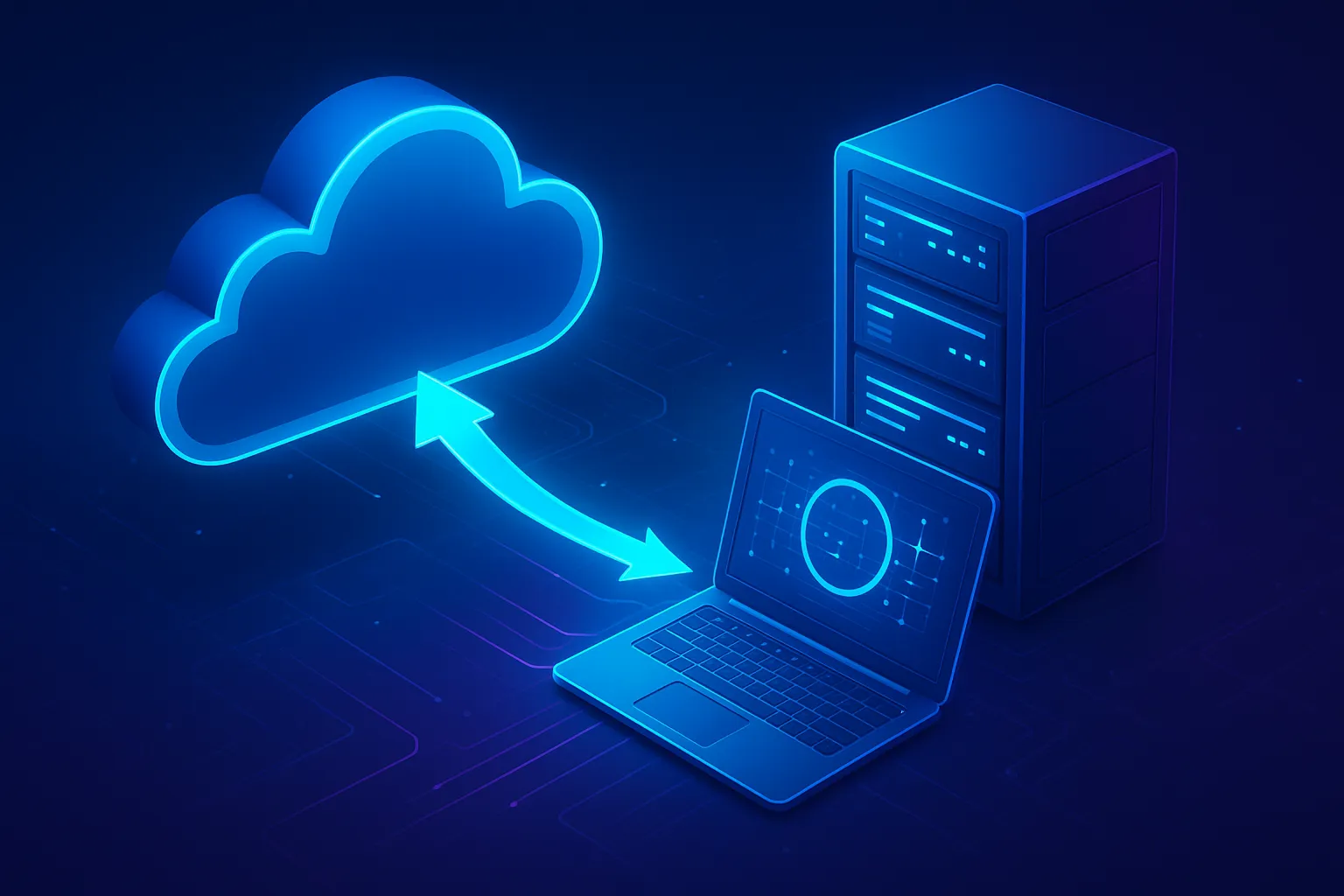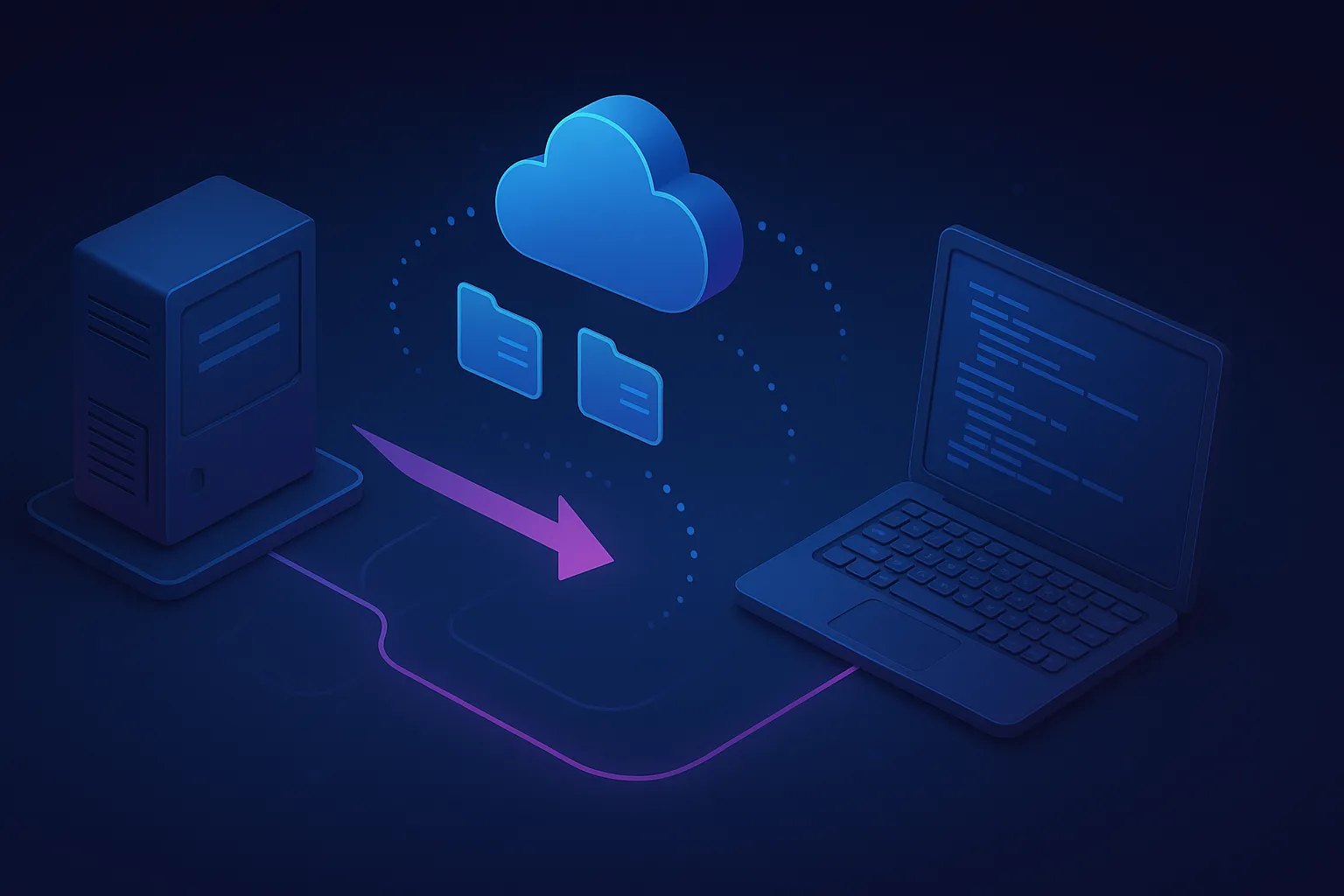What Is Remote System Migration and Why Does Your Business Need It?
Remote System Migration refers to the process of transferring an organization’s data, applications, and IT infrastructure from one environment to another
Every business eventually reaches a turning point where legacy systems can no longer keep up with innovation. The solution isn’t just to upgrade, it’s to migrate. Remote System Migration empowers companies to transition data, applications, and entire infrastructures to modern platforms, all managed by experts from anywhere in the world. It’s efficiency, security, and scalability combined in one transformative move.
What Is Remote System Migration?
Remote System Migration refers to the process of transferring an organization’s data, applications, and IT infrastructure from one environment to another, entirely managed and executed remotely by a team of migration specialists.
Instead of requiring on-site engineers and manual hardware handling, the process leverages secure cloud connections, encrypted data channels, and advanced automation tools to move entire systems safely and efficiently.

What Is Remote System Migration?
In essence, Remote System Migration allows businesses to modernize their infrastructure without disruption. Whether migrating from on-premise servers to the cloud, upgrading legacy systems to newer architectures, or consolidating platforms across multiple locations, this approach ensures the transition is seamless, secure, and cost-effective.
Unlike traditional system migration, which often involves physical presence, extended downtime, and operational risks, the remote model is designed for speed, scalability, and business continuity. Companies can continue their daily operations while their systems are migrated in the background, minimizing downtime and eliminating unnecessary interruptions.
There are several common types of system migration that businesses may undergo:
- On-Premise to Cloud Migration: Moving infrastructure and workloads to public or private cloud environments such as AWS, Azure, or Google Cloud.
- Legacy System Modernization: Upgrading outdated technologies to modern, scalable frameworks that improve performance and security.
- Cross-Platform Migration: Transferring data or systems between different operating systems, databases, or applications for better compatibility and efficiency.
By adopting a remote approach, businesses gain access to global expertise and around-the-clock support, ensuring that every aspect of the migration, from data validation to system testing, is handled with precision and care.
How Remote System Migration Works?
While every organization’s IT environment is unique, the Remote System Migration process typically follows a structured, step-by-step approach designed to ensure security, continuity, and performance. At Serdao, every migration project is carefully planned and executed to minimize disruption and maximize success.

How Remote System Migration Works?
Here’s how the process works:
1. Assessment & Planning
Every successful migration begins with a clear understanding of the existing system.
During this phase, Serdao’s experts analyze your current infrastructure, dependencies, and data flow to identify potential risks and technical requirements. A detailed migration roadmap is then developed, outlining timelines, backup strategies, and compatibility considerations, ensuring every aspect is accounted for before execution begins.
2. Backup & Risk Management
Before any data is moved, a comprehensive backup and contingency plan is implemented.
This includes full data replication, snapshot creation, and rollback mechanisms to guarantee data integrity. By proactively managing risk, Serdao ensures that even in the event of an unexpected issue, your critical business information remains protected and recoverable at all times.
3. Secure Data Transfer
The core of remote migration lies in secure, encrypted data transmission.
Serdao employs end-to-end encryption protocols and real-time monitoring tools to safeguard data throughout the transfer process. All migration activities are performed through controlled access systems, ensuring compliance with international security standards such as ISO/IEC 27001 and GDPR.
4. Testing & Validation
Once migration is completed, the new system undergoes rigorous testing and validation to verify functionality, performance, and compatibility.
This stage includes performance benchmarking, application testing, and data verification, ensuring that everything operates exactly as intended. The goal is not just to move data, but to deliver a fully optimized and operational environment ready for immediate use.
Through this well-defined process, Remote System Migration becomes more than just a technical operation, it’s a strategic partnership that enables organizations to evolve confidently, minimize risks, and unlock new efficiencies in their IT landscape.
Key Benefits of Remote System Migration
Choosing Remote System Migration isn’t just about moving data, it’s about transforming how your business operates. This modern approach brings multiple advantages that go beyond simple technical efficiency:
- Seamless Business Continuity: Migration happens in the background without interrupting your daily operations, allowing teams to stay productive while systems are being upgraded.
- Enhanced Data Security: All transfers are protected with advanced encryption, access control, and real-time monitoring to ensure that sensitive information remains safe throughout the entire process.
- Reduced Downtime and Risk: Remote execution minimizes system downtime, avoids costly interruptions, and eliminates the need for on-site intervention, ensuring a smooth transition.
- Cost and Time Efficiency: By eliminating physical deployment and leveraging automation, remote migration significantly reduces both operational costs and project timelines.
- Scalability and Flexibility: Easily adapt your IT environment as your business grows, whether it’s expanding capacity, integrating new tools, or adopting cloud-based solutions.
- Expert-Led Process: Every migration is handled by specialized engineers who bring years of experience in cross-platform and cloud migration, ensuring accuracy and reliability.
- Future-Ready Infrastructure: Remote System Migration lays the foundation for modernization, enabling businesses to embrace innovation and prepare for future technological advancements.
Now, these benefits make Remote System Migration more than a convenience, it’s a strategic move that helps businesses stay secure, agile, and competitive. With the right partner like Serdao, migration becomes not just a process, but a long-term investment in your company’s growth and resilience.
Readmore Blog Serdao:
What is Custom Software Development
Offshore Software Development Services
Offshore Software Development Company
mobile application development
Why Your Business Needs Remote System Migration Now
As digital competition intensifies, delaying infrastructure upgrades is no longer an option. Remote system migration offers a strategic path to modernize without the costs and friction of on-site rollouts. Below are four compelling reasons, each examined in detail, why organizations should act now.

Why Your Business Needs Remote System Migration Now?
1. Security Threats Are Escalating
Older systems frequently run unsupported software, lack recent security patches, or rely on deprecated protocols. These gaps create easy entry points for cyberattacks, data breaches, and compliance violations.
Remote migration enables organizations to move workloads to environments with better security postures (modern OS, up-to-date patches, hardened cloud services) and apply end-to-end encryption during transfer.
Beyond the move itself, migration projects are an opportunity to implement stronger identity and access management, network segmentation, and continuous monitoring, reducing attack surface and lowering long-term security risk. In short, migrating now turns a reactive security posture into a proactive one.
2. Downtime and Operational Risk Hurt Competitiveness
Business continuity is a top priority: every minute of unplanned downtime costs revenue, reputation, and customer trust. Traditional, on-site migrations often require lengthy maintenance windows and risky manual steps that can disrupt services.
Remote system migration, by contrast, can be staged, synchronized, and tested incrementally, allowing production systems to remain available while parallel environments are prepared and validated. This reduces total downtime exposure and operational risk.
For companies competing on speed and reliability, minimizing disruption during upgrades directly supports customer retention, SLA compliance, and time-to-market for new features.
3. Cost Pressures Demand Efficient IT Models
Maintaining aging hardware, expensive on-prem licenses, and specialist staffing for legacy systems is increasingly uneconomical. Remote migration often unlocks more efficient cost models by enabling cloud adoption, workload consolidation, or platform modernization.
These shifts reduce capital expenditure on physical servers, lower maintenance overhead, and provide opportunities to right-size resources (pay-as-you-go compute, serverless architectures, managed services).
Additionally, automation and centralized remote management lower labor costs and free IT teams to focus on innovation rather than routine upkeep. Acting now captures these savings sooner and converts sunk costs into future-facing investments.
4. Business Agility and Future Growth Depend on Modern Infrastructure
Market demands change rapidly, new features, integrations, and scaling requirements appear with little notice. Legacy architectures make it difficult to adopt modern development patterns (CI/CD, microservices, containerization) and to integrate third-party SaaS or analytics tools.
Remote migration is not just about moving bits; it’s about enabling agility. Modernized environments support faster deployments, elastic scaling during peak demand, and easier integration with AI, analytics, or edge computing services. Organizations that migrate proactively position themselves to launch products faster, experiment safely, and seize new opportunities without being hamstrung by technical debt.
Postponing migration may seem safer in the short term, but it amplifies security exposure, operational risk, and long-term costs, while slowing your ability to respond to market needs.
Remote system migration presents a low-friction, scalable path to modern infrastructure: it reduces downtime, improves security, lowers total cost of ownership, and unlocks business agility. For organizations serious about resilience and growth, migrating now is not just an IT project, it’s a strategic imperative.
Why Choose Serdao for Remote System Migration
Selecting the right partner can determine whether your system migration is smooth and secure or costly and disruptive. With deep technical expertise and a commitment to precision, Serdao delivers a migration experience built around trust, performance, and business continuity.
- Proven Expertise Across Platforms: Serdao’s engineers bring years of hands-on experience in cross-platform and multi-environment migration, from legacy systems to modern cloud infrastructures. Every project benefits from technical know-how backed by global best practices.
- End-to-End Security Assurance: Security is embedded in every stage of the migration journey. Serdao applies advanced encryption, controlled access, and real-time monitoring to protect sensitive data from start to finish.
- Zero-Downtime Strategy: Leveraging automation, incremental transfer, and live validation tools, Serdao minimizes downtime and ensures that your business continues operating smoothly during the transition.
- Customized Migration Plans: No two systems are the same. Serdao develops tailored migration strategies aligned with your infrastructure, timelines, and business priorities, ensuring an efficient and risk-free transformation.
- Comprehensive Post-Migration Support: Beyond deployment, Serdao provides ongoing optimization, performance monitoring, and technical support to guarantee long-term system stability and scalability.
- Global Presence with Local Insight: With teams based in both France and Vietnam, Serdao combines international standards with localized understanding, offering flexible, responsive support wherever your business operates.
In a world where data drives every decision, Serdao transforms migration into a strategic advantage, helping businesses modernize confidently, reduce risk, and prepare their infrastructure for the future of digital innovation.
Conclusion
The digital world is evolving faster than ever and your IT systems must evolve with it. Remote System Migration is not merely a technical process; it’s a strategic transformation that empowers businesses to stay agile, secure, and ready for tomorrow’s challenges. By embracing remote migration, you’re choosing continuity over disruption, innovation over stagnation, and efficiency over complexity.
Whether you’re modernizing legacy systems, moving to the cloud, or optimizing your infrastructure, the key to success lies in execution and in partnering with experts who understand how to make the transition seamless and secure.
Readmore Services Serdao:
Mobile Application Development
Readmore Services Serdao(France):
Développement d’applications web
Développement d’applications mobiles